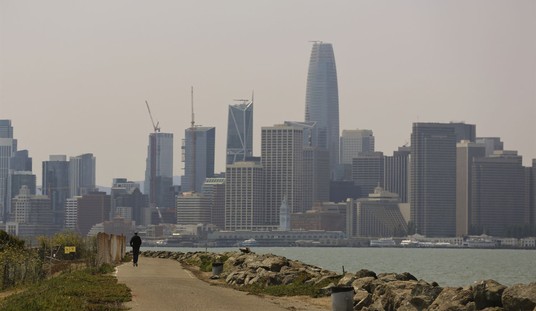The first hint of this came in the 2011Q4 GDP report. While the topline number of 2.8% looked mediocre but not horrid, the figure for growth in real final sales of domestic product — which measures end sales and not inventory adjustments — registered only at 0.8%, barely above recession level. I noted that this was a red flag for the next quarter and a sign of dropping demand, but today’s report on durable goods was much worse than that indicated:
New orders for manufactured durable goods in January decreased $8.6 billion or 4.0 percent to $206.1 billion, the U.S. Census Bureau announced today. This decrease, down following three consecutive monthly increases, followed a 3.2 percent December increase. Excluding transportation, new orders decreased 3.2 percent. Excluding defense, new orders decreased 4.5 percent. Transportation equipment, down following two consecutive monthly increases, had the largest decrease, $3.6 billion or 6.1 percent to $55.2 billion. This was due to nondefense aircraft and parts, which decreased $3.8 billion.
Here’s more bad news — even with the drop in demand and orders, inventories continued to rise:
Inventories of manufactured durable goods in January, up twenty-five consecutive months, increased $2.6 billion or 0.7 percent to $372.5 billion. This was at the highest level since the series was first published on a NAICS basis in 1992 and followed a 0.3 percent December increase. Machinery, up twenty-two consecutive months, had the largest increase, $0.9 billion or 1.4 percent to $61.4 billion.
Business investment dropped sharply as well, by 6.3% outside of defense:
Nondefense new orders for capital goods in January decreased $5.4 billion or 6.3 percent to $79.5 billion. Shipments decreased $0.6 billion or 0.9 percent to $70.9 billion. Unfilled orders increased $8.6 billion or 1.6 percent to $554.4 billion. Inventories increased $1.7 billion or 1.0 percent to $172.0 billion. Defense new orders for capital goods in January increased $0.9 billion or 17.7 percent to $5.9 billion. Shipments decreased $0.3 billion or 3.5 percent to $7.4 billion. Unfilled orders decreased $1.4 billion or 1.0 percent to $147.2 billion. Inventories increased $0.1 billion or 0.6 percent to $20.2 billion.
Reuters doesn’t sugar-coat these results, noting that the drop was the worst in three years and four times worse than expected:
New orders for U.S. manufactured goods fell in January by the most in three years as demand fell across the board from machinery to aircraft, suggesting the economy started the year on weaker footing than expected.
Durable goods orders dropped 4.0 percent, the biggest drop since January 2009 when the country was still mired in a deep recession, according to Commerce Department data on Tuesday.
Economists had forecast orders falling 1.0 percent.
This takes place at the worst possible time for the US, and especially for the Obama administration. Rising gas prices will have an inflationary effect on most goods brought to market, especially on produce and other food items, which rely on ground transportation for distribution. That will erode disposable income and have households pinching pennies. Businesses will also have to cut back their spending even further as gas prices rise in order to avoid hiking prices on their own goods and services. As a result, demand will drop off sharply in the next few months, which means we may be waiting a very long time for durable-goods orders to rebound.








Join the conversation as a VIP Member